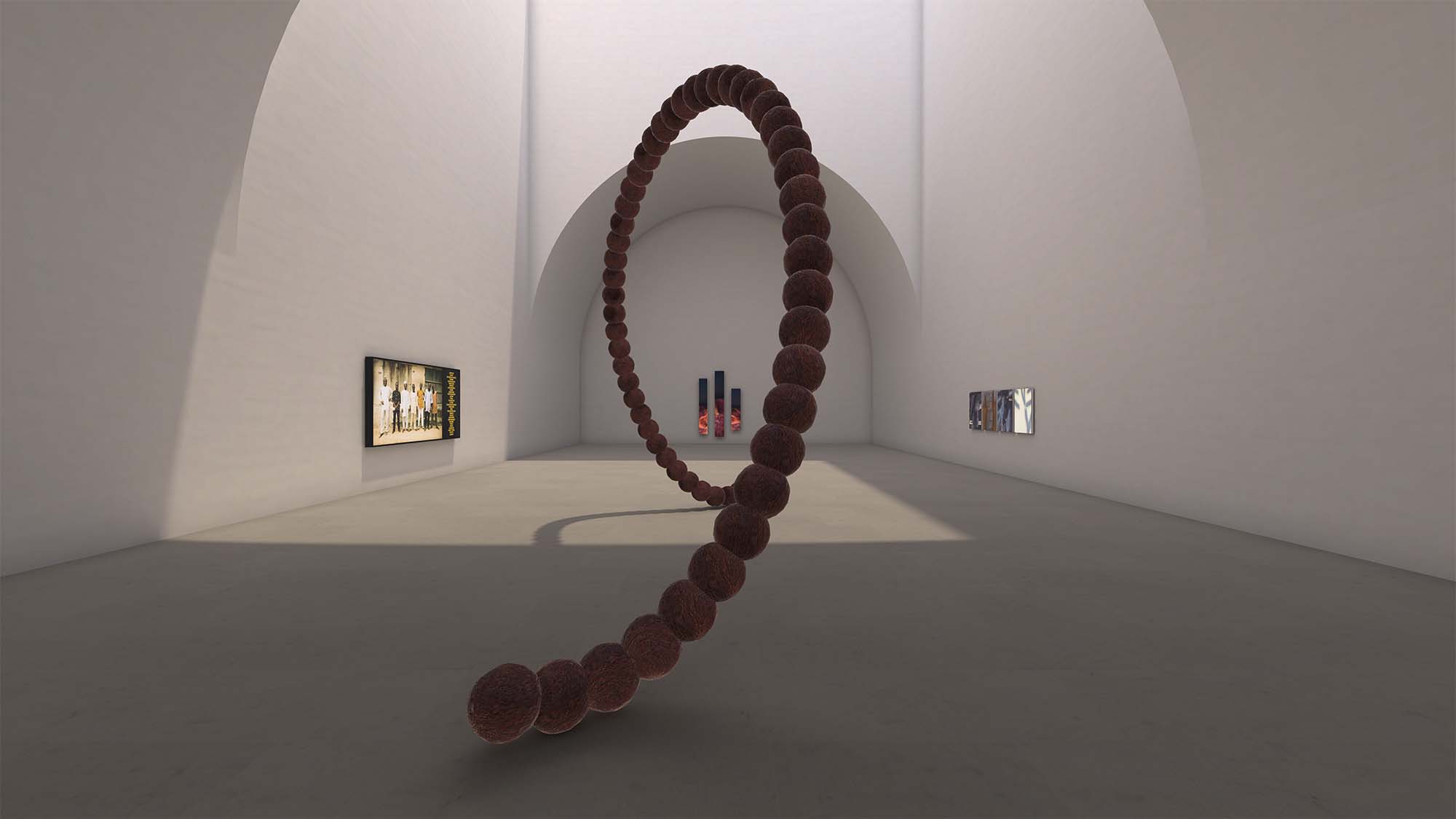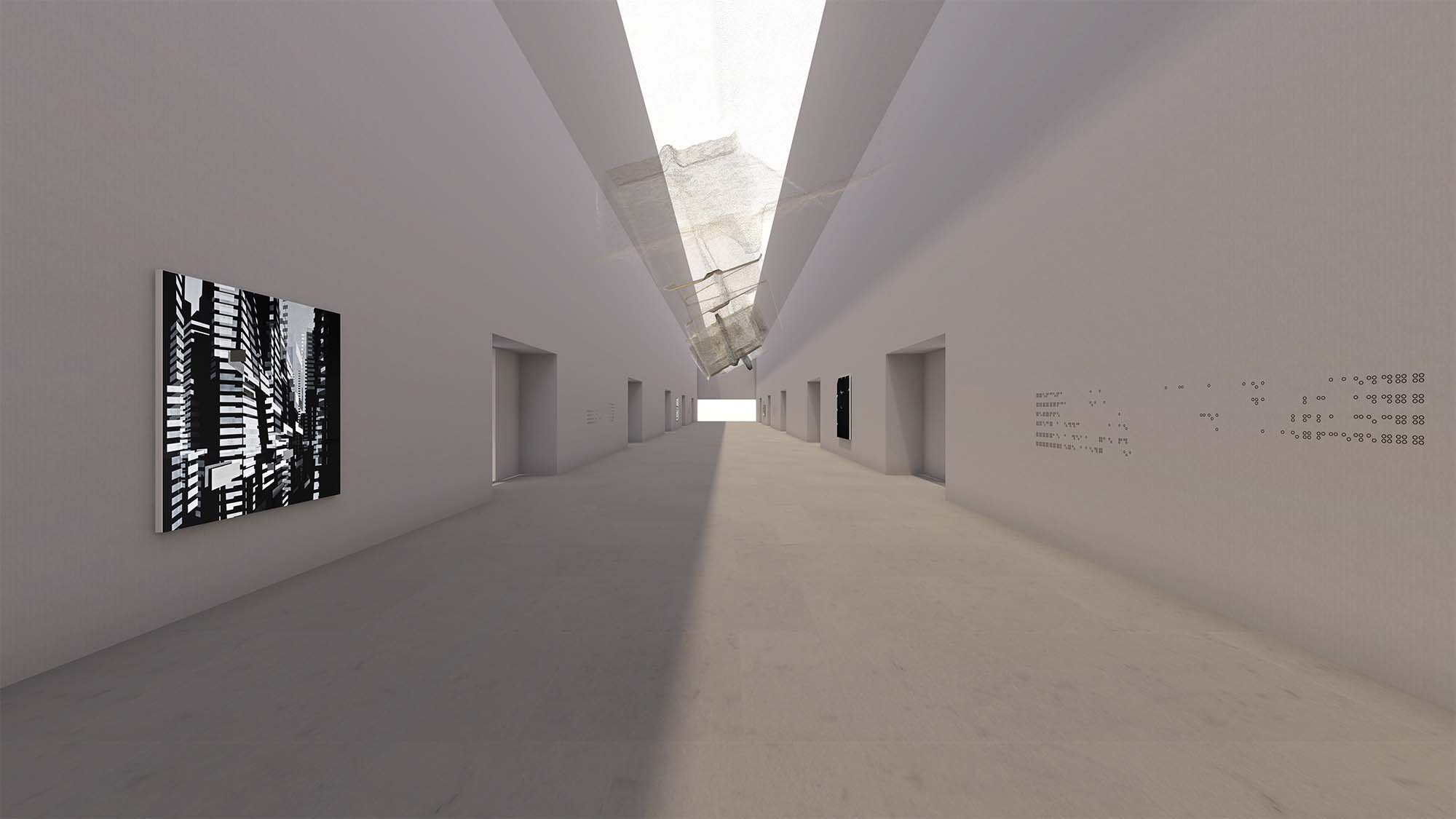Exhibition IV
June 9 – Sep 18, 2021
In AORA IV, we turn our exploration to ‘Urbanism’. Noting the composite world around us, this AORA chapter addresses man made structures, whether cities or cultivated landscapes, who or what they are composed of, and for how long. Bringing together artists and galleries from London to Manila, Hong Kong to São Paulo, Istanbul to New York and beyond, AORA IV addresses several probing questions: who is building these, for whom, how, for how long? We also quizzically address cultural questions of who is seen and heard, as well as how this is changing. Across multiple site-specific works and mediums – sound, installation, sculpture, painting, drawing and digital rendering – AORA IV addresses our multi-layered surroundings and how, as well as what, we’ve come to be and perceive.
June 9 – Sep 18, 2021
In AORA IV, we turn our exploration to ‘Urbanism’. Noting the composite world around us, this AORA chapter addresses man made structures, whether cities or cultivated landscapes, who or what they are composed of, and for how long. Bringing together artists and galleries from London to Manila, Hong Kong to São Paulo, Istanbul to New York and beyond, AORA IV addresses several probing questions: who is building these, for whom, how, for how long? We also quizzically address cultural questions of who is seen and heard, as well as how this is changing. Across multiple site-specific works and mediums – sound, installation, sculpture, painting, drawing and digital rendering – AORA IV addresses our multi-layered surroundings and how, as well as what, we’ve come to be and perceive.

As a first point of encounter, in The Hall, we explore civilian epicentres. At the heart of this consideration is how these change, over time, due to commerce, societies, climate, or other. Framing our exploration are two seminal works by Alfredo Jaar: ‘Lagos 2002’ (1991) and ‘Johannesburg 2026’ (2016) that each, at the time of initial presentation and to this day, offer visions of how these two cities could be epicentres in the future – or at the dictated point in time – of trade, reflecting on the centres of power but also concentrations of people and business. Exploring how civilian space has changed is Raheel Khan’s sound work ‘Oscillate//Terrain’ (2021) that resonates throughout The Hall, capturing the rumble of Manchester’s commercial zone – how the infrastructure remains while people are amiss due to COVID-19 social distancing measures. Thinking of trade and legacy, ‘Man Ming Ln’ (2021) by João Vasco Paiva, digital casts of styrofoam boxes found in Hong Kong wet markets, convey a sense of contemporary archeology through a non-recyclable material that extends beyond an ordinary lifespan, while ‘Double Minaret’ (2020) by Shaan Syed contemplates shifts in centres, from religious to other, through his ongoing investigation around the giant spiral minaret of the Great Mosque of Samarra (Iraq, 9th c. C.E.).

Moving in towards a deconstruction and reformulation of the cityscape are Lucas Dupuy’s mixed media gouache works and his new digital commission ‘3AM Somewhere Out Of Beaumont’, which collectively seem to map and construct a possible urban scape. Exploring fantastical possibilities are also the desert visionscapes by Ellie Antoniou, which, placed as virtual vertical portals, act as a visual parenthesis at the start and end of The Hall. Tracing space and geometry is the monumental digital sculpture ‘Day starts with morning’ (2021) by David Murphy, resonating with The Hall’s arches and pathway, probing thought on the interconnectivity of physical elements and a day’s cycle. Similarly responding to architecture, place and light is the digital site-specific work ‘Expansion Series, Work No. 4’, 2021 by Dori Deng, a sensitive geometric composition that plays with material and gravity. Relating to the sun but equally the materiality of our shifting urban quotidian, Kristian Kragelund’s ‘Blue Cross’ and ‘Cell 5’ (2020) resemble stained glass windows that are in fact composed of malfunctioned and anodised solar cells in a welded steel frame. Also evoking a sense of fragility is ‘Untitled’ (2021) by Nicole Coson; part of Coson’s most recent series Exoskeleton, the oil on canvas works explores how blinds obstruct the visual exchange between the inside and the outside, protecting domestic spaces from being exposed to the external world. Investigating home and place but also fiction is Mak Ying Tung 2, whose painting ‘Home Sweet Home: Rosy Rumba’ (2019), is created from the snapshots she fabricates in the globally popular life simulation game “The Sims”, crafting an alternate reality in a virtual space.

Contemplating culture and veneration, in the pathway from The Hall to The Place, we encounter ‘big city life ~ seducing the skyscraper / upending the phallus’ (2021) by Zoë Marden. A digital sculpture of the IFC 2 in Hong Kong, the tallest building in Asia at one point, is accompanied by a sound element in which Marden investigates phallocentrism, seduction and power. The sound component extends into The Place, which gives way to a brimming ceiling work by Shiva Lynn Burgos, ‘Kwoma Spirit House Dome’ (2021). Informed by the traditional styles Burgos learnt during her time in Mariwai, a Kwoma village located in Papua New Guinea, the dome combines field-collected and found objects with contemporary materials and stands as a resource for examining value systems in relation to currency, spirituality and custom. Extending notions of culture and preservation, surrounding the rippling pool in individual niches, are new works by Haroun Hayward and Noémie Goudal. Hayward explores through his multi-media drawings an amalgamation of architecture, culture and ritual as evoked through textile to 90s music. A sense of place and overlapping narratives is extended over to the collage works by Goudal, ‘Les Mécaniques – Tropiques I-IV’, (2020), which reimagine the earth’s tropical jungles within the context of Paris’ man-made urban parkland.

Finally, in The Path, we explore the rhythm, traces and textures of architectural structures. Freed from physical confinements that exist in real life, one first encounters ‘Breath’, a virtually site-specific work by Ben McDonnell that draws upon themes of temporary support, rhythm and instability. Threading over the ceiling of the virtual space, the work comprises over 120,000 individual points which make a congruent, wave-like form. Relating to accessibility, encounters, and how one experiences a place and our surroundings, are ‘Cloud (piano duo)’ (2021), a series of wall-inscribed braille texts and accompanying sound works by Ian Malhotra that trace a contemplative visual and oral zig zag through the space. Placed throughout The Path are equally three paintings by Nuri Kuzcan, whose subjects are architectural, geometric, and abstract forms that are employed to survey and depict the implications of living in an urban setting. At the end of The Path, The Growing – a collective of architects, artists and designers – present a gateway into another universe: ‘The Galactic Greenhouse’ (2021). Digitally created and rendered elements are coherently transfused with watercolour textures, presenting an interactive environment that viewers are invited to wander and explore, encouraging us to imagine new possible worlds.

Ellie Antoniou
Nicole Coson
Dori Deng
Lucas Dupuy
Noémie Goudal
The Growing Collective
Haroun Hayward
Alfredo Jaar
Raheel Khan
Kristian Kragelund
Nuri Kuzucan
Shiva Lynn Burgos
Ian Malhotra
Zoe Marden
Ben McDonnell
David Murphy
Henrique Oliveira
Shaan Syed
Mak Ying Tung 2
João Vasco Paiva
